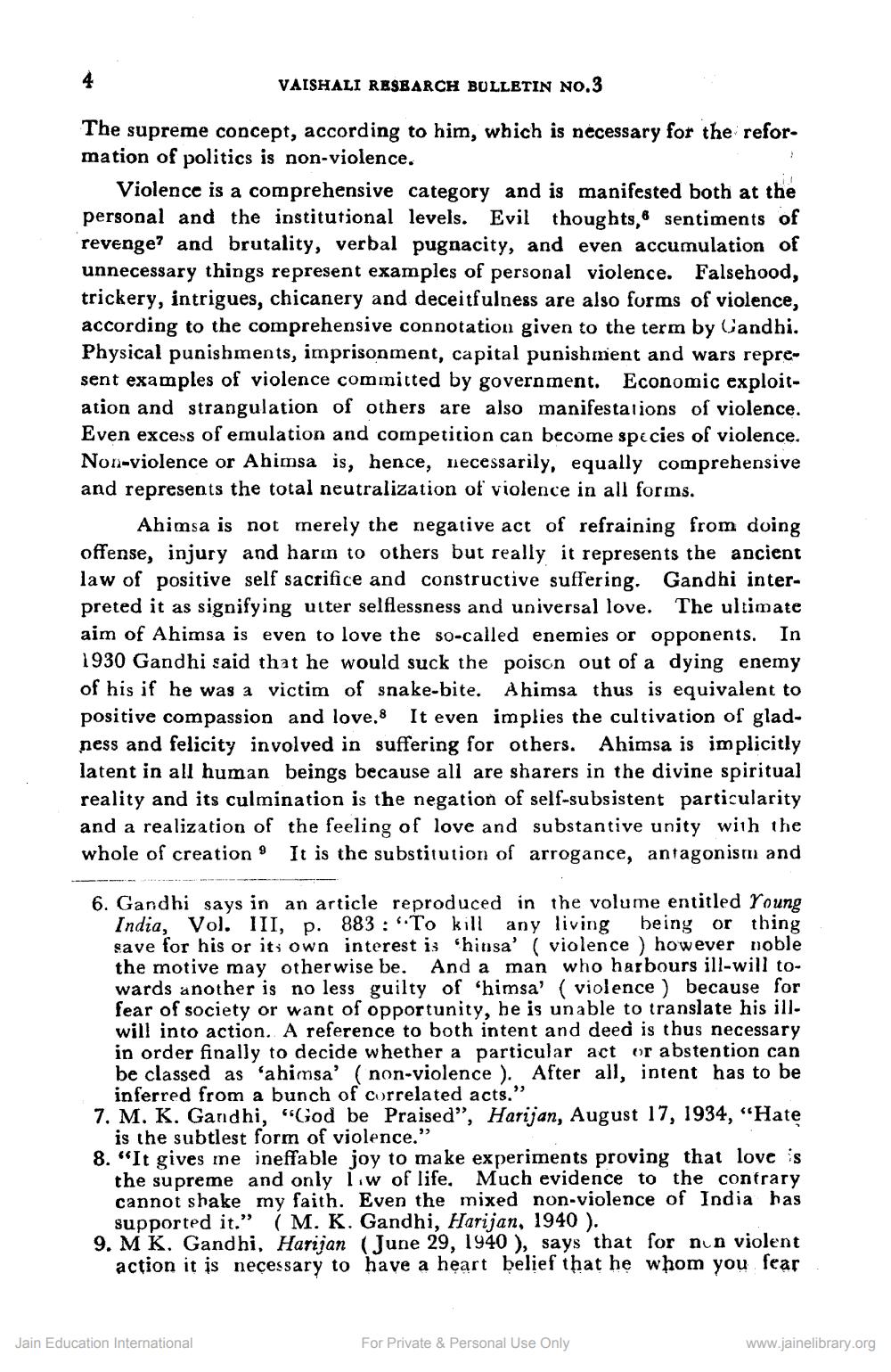________________
VAISHALI RESEARCH BULLETIN NO.3
The supreme concept, according to him, which is necessary for the reformation of politics is non-violence.
Violence is a comprehensive category and is manifested both at the personal and the institutional levels. Evil thoughts, sentiments of revenge? and brutality, verbal pugnacity, and even accumulation of unnecessary things represent examples of personal violence. Falsehood, trickery, intrigues, chicanery and deceitfulness are also forms of violence, according to the comprehensive connotation given to the term by Gandhi. Physical punishments, imprisonment, capital punishment and wars represent examples of violence committed by government. Economic exploitation and strangulation of others are also manifestations of violence. Even excess of emulation and competition can become species of violence. Non-violence or Ahimsa is, hence, necessarily, equally comprehensive and represents the total neutralization of violence in all forms.
Ahimsa is not merely the negative act of refraining from doing offense, injury and harm to others but really it represents the ancient law of positive self sacrifice and constructive suffering. Gandhi interpreted it as signifying utter selflessness and universal love. The ultimate aim of Ahimsa is even to love the so-called enemies or opponents. In 1930 Gandhi said that he would suck the poison out of a dying enemy of his if he was a victim of snake-bite. Ahimsa thus is equivalent to positive compassion and love.8 It even implies the cultivation of gladness and felicity involved in suffering for others. Ahimsa is implicitly latent in all human beings because all are sharers in the divine spiritual reality and its culmination is the negation of self-subsistent particularity and a realization of the feeling of love and substantive unity with the whole of creation. It is the substitution of arrogance, antagonism and
6. Gandhi says in an article reproduced in the volume entitled Young
India, Vol. III, p. 883: "To kill any living being or thing save for his or its own interest is "hinsa' ( violence ) however noble the motive may otherwise be. And a man who harbours ill-will towards another is no less guilty of 'himsa' ( violence) because for fear of society or want of opportunity, he is unable to translate his illwill into action. A reference to both intent and deed is thus necessary in order finally to decide whether a particular actor abstention can be classed as ahimsa' (non-violence ). After all, intent has to be
inferred from a bunch of correlated acts." 7. M. K. Gandhi, "God be Praised", Harijan, August 17, 1934, “Hate
is the subtlest form of violence." 8. "It gives me ineffable joy to make experiments proving that love is
the supreme and only liw of life. Much evidence to the contrary cannot shake my faith. Even the mixed non-violence of India has
supported it.” (M. K. Gandhi, Harijan, 1940). 9. MK, Gandhi, Harijan (June 29, 1940), says that for nun violent
action it is necessary to have a heart belief that he whom you fear
Jain Education International
For Private & Personal Use Only
www.jainelibrary.org




